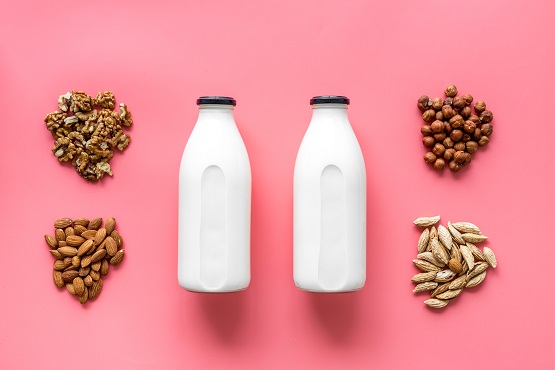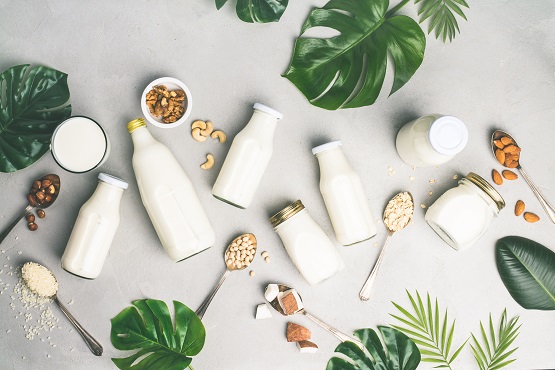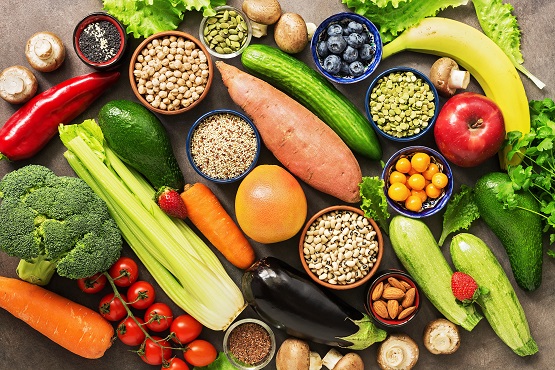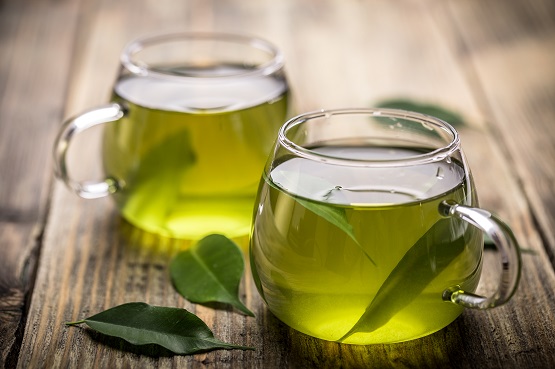Recently, everywhere you look you see dairy-free milk alternatives. From mainstays like almond and soy, to trendy newcomers like oat and coconut, interest in dairy-free and plant-based milk continues to ramp up all over the world. Each of these milks brings something different to the table – or better yet, the breakroom. As recently as 2017, the global milk alternative market was valued at an estimated $11.9 billion, so it’s safe to assume dairy-free is here to stay. With quite a few options to choose from, it can be difficult to decide which is the one for you, taking the health benefits and flavor profile into consideration.
The most popular milk alternative is almond milk, representing a whopping 63% of the total market with roughly $1.5 billion in sales from September 2019 to September 2020. Almond milk comes in several flavors, and many manufacturers produce both sweetened and unsweetened varieties. It has a light, nutty and almost sweet taste, but it is much thinner than full-cream dairy milk because of the water content.
The fastest riser in the dairy-free game is oat milk, showing a 350.8% year over year sales increase from 2019 to 2020. Oat milk usually has a thicker creamy texture that is comparable to the texture of dairy milk. Additionally, it’s generally slightly sweet, but without a sugary taste. Because of this, oat milk works as a great base for lattes and is a solid rival for those who want to ditch dairy from their morning coffee routine. It is also the most sustainable dairy alternative.
Coconut milk tastes, well, like coconut. Unlike coconut water, this milk alternative does not occur naturally. Instead, solid coconut flesh is mixed with water to make coconut milk, which is about 50% water. It is naturally sweet and has a higher fat content that lends itself to a nice froth for your coffee. Coconut milk is full of important nutrients like manganese and copper which may boost your heart health and provide other benefits as well.
Soy milk may be considered the old guard of the group. The long time standard for dairy-free alternatives is made from soybeans and filtered water. It contains as much protein as cow’s milk, yet is lower in calories than whole milk and about equal to the calories in 1 percent or 2 percent milk. The natural sweetness makes soy milk great for any iced beverage.
Gone are the days of the same old breakroom options. With more coffee, tea, and milk options available than ever, you can truly bring the café to the workplace. This innovation isn’t exclusive to product, either. The way we can make our favorite beverages continues to progress as well. Machines like the Flavia Creation 600 froth creamy, fresh milk right in the cup to make a coffee break an experience. The glass pot of yesterday is now a velvety, almond milk latte. So, choose your milk – dairy or otherwise – and get creating.





